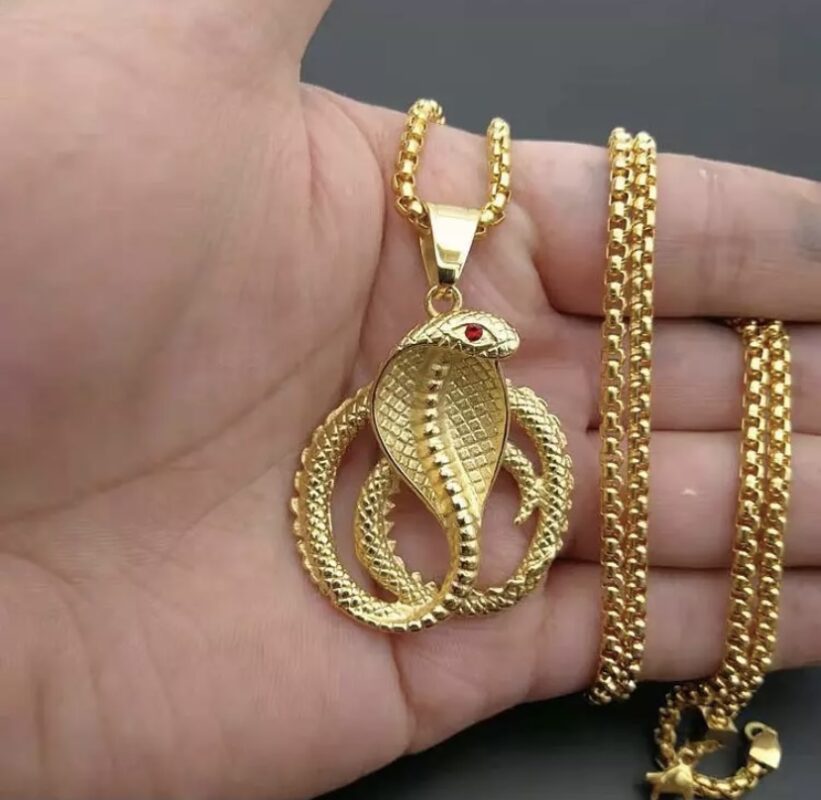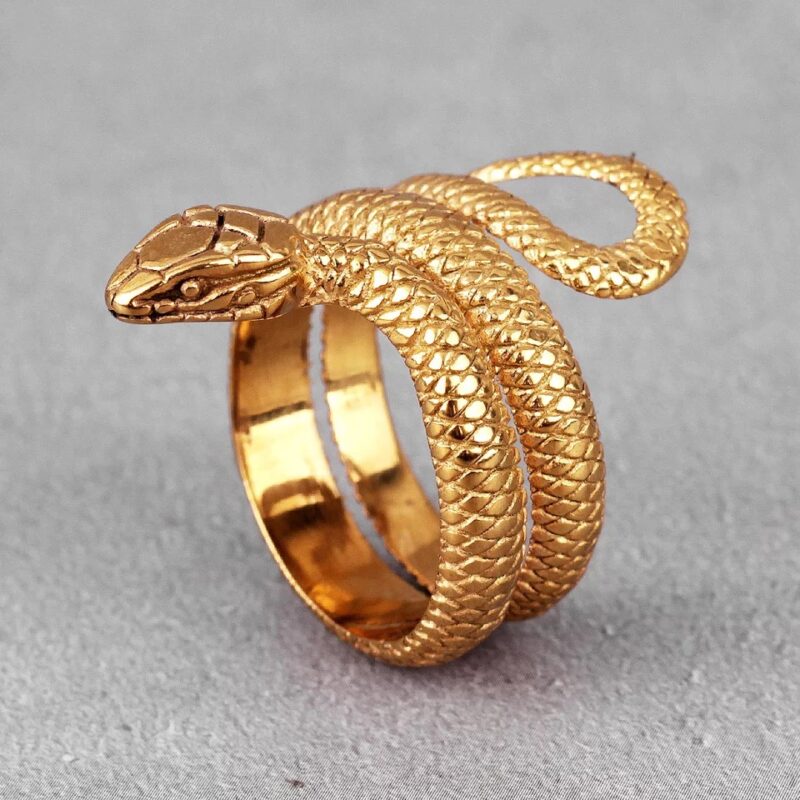Men Style 2021
Did you Know What is the Symbolism of Snake Jewellery?
Snake jewellery. Did you know what is the symbolism? They are poisonous, but glittering. Hardly anyone ever encounters a real snake. But as a ring it enjoys great popularity. The reptile has been used as a jewellery motif for thousands of years.
Why, of all things, the often-hated snake has found its place on jewellery for thousands of years. The snake is still found today in gold and silver on fingers and in ears or coiled around necks and arms is a mystery. The animal was and is by no means always sympathetic and not in every culture.
Even before Adam and Eve, the snake, which is male in most languages and is said to have been on this earth for at least a hundred million years. Appeared in pre-Christian religions and cultures. On a stamp seal from the 4th millennium B.C. For example, it is depicted next to a loving couple, and given the depiction, it can be assumed that it was a symbol of new life.
Snakes Sometimes Evil and Devious, Sometimes Good and Wise
Its image was not always so positive. Its reputation was a roller coaster ride. At times it was a symbol of death and ruin, at other times of fertility and rebirth. For Sigmund Freud she was a phallic symbol and stood for libidinous sexuality. One would not want to fall into a pit of snakes, nor among people with forked tongues. Human characteristics were also assigned to the snake – it was evil, deceitful and false, but in some cultures kind and wise, and in the Bible sometimes cunning and clever, sometimes sinful and sometimes healing.
Its toxicity has been warned about since ancient Greece, when it bit Eurydice to death, for example. At the same time, however, it is a symbol of the art of healing – to this day, the walking stick of Aesculapius, entwined with an adder, is the symbol of doctors and pharmacists.
Not every symbolism is reflected in the arts and crafts, however; often it is simply its form that lends itself to goldsmiths for snake-shaped handles and grips on elaborate jugs and bowls, for example. The snake shape also fits perfectly around the fingers.
In addition, the snake head offers many opportunities for splendid decorations with jewels and coloured gemstones – red and green eyes, sparkling stretched out long tongues, iridescent skin. And often a diamond is mounted on the head like a crown.
Snake as Jewellery Apparently Existed in all Cultures Around the World.
Snake jewellery apparently existed in all cultures around the world. Only in Australia and China people probably had a problem with it or simply had no interest. During the Migration Period, the motif adorned brooches among the Franks and Alemanni. Vikings also carved snakes into rings and other metal fittings. In the Renaissance and Baroque periods, the snake was out of fashion. In the 19th century of Art Nouveau, bangles with scaly carved bodies curled up to eight times around the forearm, and almost every head emerging from the coils was set with large coloured stones or diamonds.
To this day, the snake motif is present in jewellery, still snakes with glowing eyes bite their own tails to form a ring. No famous jewellery from Cartier to Boucheron to Hemmerle can do without the motif. Not bad for one of the most hated animals in the world.
Below is our ring suggestion for those who want an extra eccentric look with the powerful symbol of snake:

 English
English


